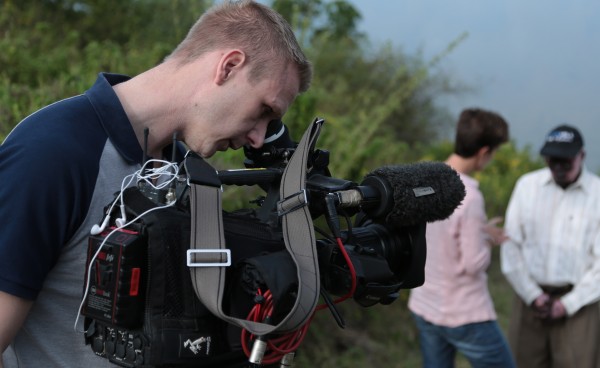Tips On How To Become A Video Journalist

Video journalism is an evolving field that has yet to cultivate an obvious identity for itself. Many companies have different needs and objectives and staff videographer positions will inevitably vary in their responsibilities. But there are a few skills that I strongly believe all budding video journalists should take note of as they begin their careers in multimedia production.
It’s important to know how to put together a compelling short-film, but that shouldn’t preclude you from learning other styles of video editing.
Unfortunately, staff content producer positions are in their twilight as newspapers and magazines rely more and more on stringers and unpaid freelancers, but here are a few tips and suggestions to help market yourself for those crucial few open positions:
1. Diversify, diversify, and diversify your style
The single character-driven short documentary piece is still a crucial part of your storytelling toolkit. But many media outlets are finding ways to bring visual life to news and won’t always be looking for that compelling character story. Why? As is the case with TIME magazine, there’s a constant need for new content. Unlike grad school, these projects cannot wait weeks to be turned over: you will frequently find yourself with two days or less to have a piece prepped for distribution.
a) Get used to editing as if you were working for MTV. For example, TIME recently rolled out a new magazine feature called “Pop Chart,” which is tantamount to a kind of a whacky news round-up. Normally, these affairs can be boring time sinks that do not attract a whole lot of viewers or interest. But with a few editing tricks and changes to your style, they can become fun little shows that entertain as well as inform.
b) Start getting comfortable with your voice. Many pieces just won’t have all the content you require to have a single character narrate an entire piece. Purists will argue that not having enough A-roll is tantamount to laziness, but the realities of the job will force you to use your voice frequently as a narrative bridge.
2. Determine what you really want out of a video journalist job
Bearing #1 in mind, it’s crucial to figure out what side of the line you want to be on. Â Many staff positions in the industry focus on post-production: Staff members take in content produced from stringers and bring that content in-line with company standards (adding credits and recutting as needed).
That isn’t to say that you’ll never find yourself in the field as a staff VJ, but you simply won’t always have to time to do those enterprise projects that you loved doing as a graduate student or freelance videographer.
It’s all a trade-off, however. Staff positions invariably bring financial stability, whereas freelancing, especially if you’re not an established brand, can be a tough business. Â The latter may give you that creative freedom you’ve always been craving, but may not reap the financial reward you’re looking for in the short-term.
3. After Effects experience is a huge plus
How the media covered the Fukushima nuclear disaster and bin Laden raid is proof of this. It’s crucial to be able to cover stories in video where there is no readily available footage, as was the case with these two events. When you’re covering an abstract concept or a process, it’s crucial to be able to illustrate them in a video — otherwise you’d have to rely on someone who has Flash expertise. (For the record, the animated bin Laden raid was one of the highest viewed videos on TIME.com)
This last point I think is one of the most important to take note of. It shows that a video journalist can take more responsibility than would traditionally be expected and shows that you have flexibility and can provide viable alternatives to simple Flash development. Further, it’s not a skill that a lot of videographers possess (normally AE is something reserved for graphic designers or effects producers), and can give you a significant leg up on your competition.





